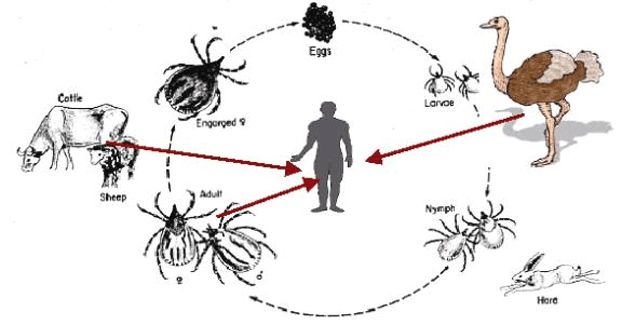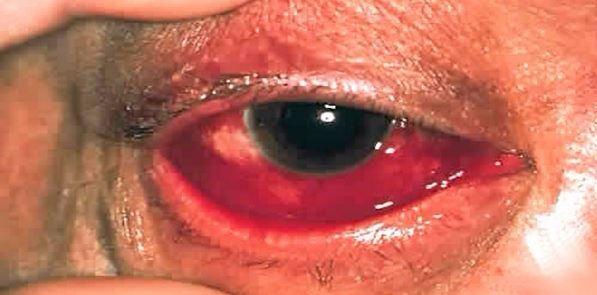
Crimean-Congo Hemorrhagic fever (CCHF) is a viral disease that spreads through tick bite. It was first described in Crimea in 1944 and was called Crimean Hemorrhagic fever. It was later also described in Congo, hence it was named Crimean-Congo Hemorrhagic fever. The disease is more common in Africa, Asia, East Europe and the Middle East. A recent outbreak has been reported in the Indian State of Gujarat.
1. Sign and symptoms in animals:
Many species of wild and domestic animals can become a host to the virus, cattle and pets included. Most bird are resistant though.They usually have no or few symptoms and survive it, unlike humans who have severe symptoms.

2. Signs and symptoms in people:
Symptoms vary person to person but this is what you can expect:
· Usually, flu-like symptoms appear first, which may end in a week’s time.
· In nearly 75% of cases, signs of hemorrhagic fever appear in the first week if not treated properly. This means emotional confusion, aggression, mood swings, fever, red eyes, flushed face, joint pain, nosebleeds, vomiting and black stools.
· The liver gets swollen which causes pain in the upper abdomen.
· This can be followed by kidney failure, breathing problems, low blood pressure, rapid heart rate and eventually a shock (a serious case of poor blood circulation)
· In the second week, the condition may start improving, more likely if you seek treatment.


4. What precautions can you take?
As they say, prevention is better than cure, you must exercise caution instead of waiting to remedy once you’ve caught the virus, especially with Congo Virus since it does not have any approved cure yet.
Since it is a bug that resides in animal fur and bites in order to transfer the disease, it is advised that you follow these preventative measures as laid out by the WHO:
Reducing the risk of tick-to-human transmission:wear protective clothing (long sleeves, long trousers);
wear light colored clothing to allow easy detection of ticks on the clothes;
use approved acaricides (chemicals intended to kill ticks) on clothing;
use approved insect/bug repellents on the skin and clothing;
regularly examine clothing and skin for ticks; if found, remove them safely;
seek to eliminate or control tick infestations on animals or in stables and barns; and
avoid areas where ticks are abundant and seasons when they are most active, like unnecessary trips to a bakra mandi or hanging out near where animals are housed.
As a precautionary measure, health-care workers caring for patients immediately outside the Congo Virus outbreak area should also implement standard infection control precautions.
We wish you a very happy, healthy and safe Eid Mubarak. Stay aware and stay in control, you guys!



